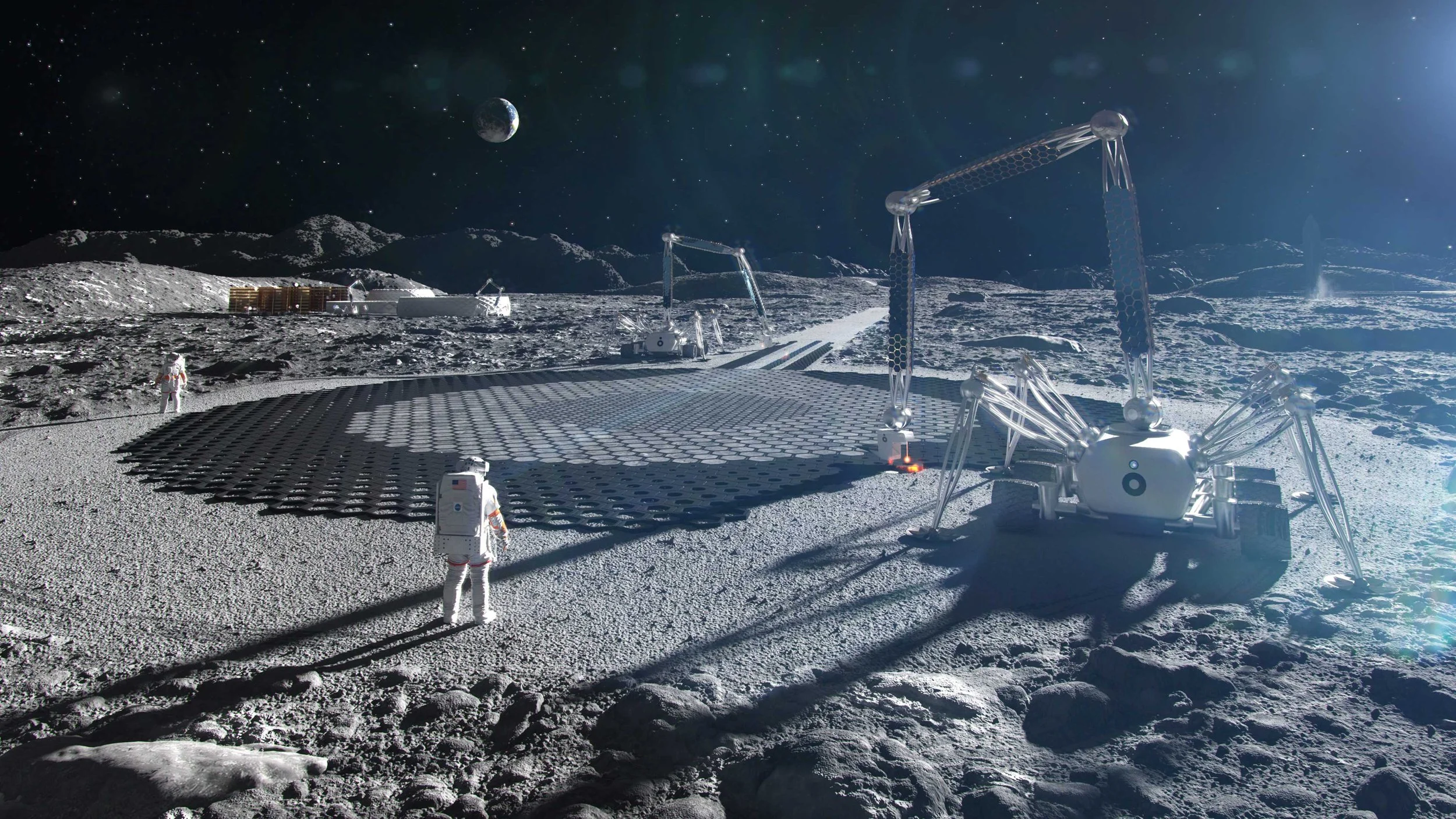Building with the Moon: Indigenous Resource Habitat Construction
ICON has been awarded funding from NASA to develop construction technologies for landing pads, habitats, and roads on the Moon using local lunar resources for additive manufacturing.
Credit: ICON/BIG-Bjarke Ingels Group
Regolith structures, printed shells, and modular interiors
Habitat economics improve dramatically when the structure is made where it stands. Additive manufacturing with regolith-based composites can print micrometeoroid shields, pressure-bearing shells and trusswork. This converts habitats from bespoke expeditions into expandable products: start with a core, add printed segments, and change-out interiors as missions evolve. It’s a logic familiar from modern software—interfaces, modules, and versioned upgrades—transposed into architecture.
Through NASA's Artemis Program, space-tech firms like ICON are awarded funding through various contracts to develop construction technologies for lunar exploitation. This involves in-situ resource utilisation (ISRU), which refers to extracting oxygen, water and other materials to develop rocket fuel and power life-support systems. Additionally, mining for metals to fabricate lunar housing, landing pads, and other structures and products, potentially create a products and services for multiple markets.
Safety, of course, leads. Material characterisation, layer adhesion, and porosity control aren’t just research topics; they become production metrics, the way a quality engineer thinks about welds and bolts. The commercial lens then focuses on reliability and speed: how fast can a landing site be made safe, how quickly can volume be added, and how easily can a base transition from research to light industry without tearing itself apart.
Go-to-market language reads like property development more than aerospace. Prospective buyers—station primes, sovereign programmes, defence-adjacent users—plan in phases and prefer flexibility. Providers that offer “habitat-in-a-kit” packages—design rules, certified print recipes, on-site print ops, and maintenance—fit cleanly into those plans. The channel is consortium-based: landers, life-support OEMs, and logistics firms coordinating timelines. Adoption is earned by full-scale mock-ups, destructive testing that speaks plainly, and interoperability demos where third-party modules mate to printed frames without drama. When expansion looks like ordering another kit rather than proposing a new programme, capital follows.
